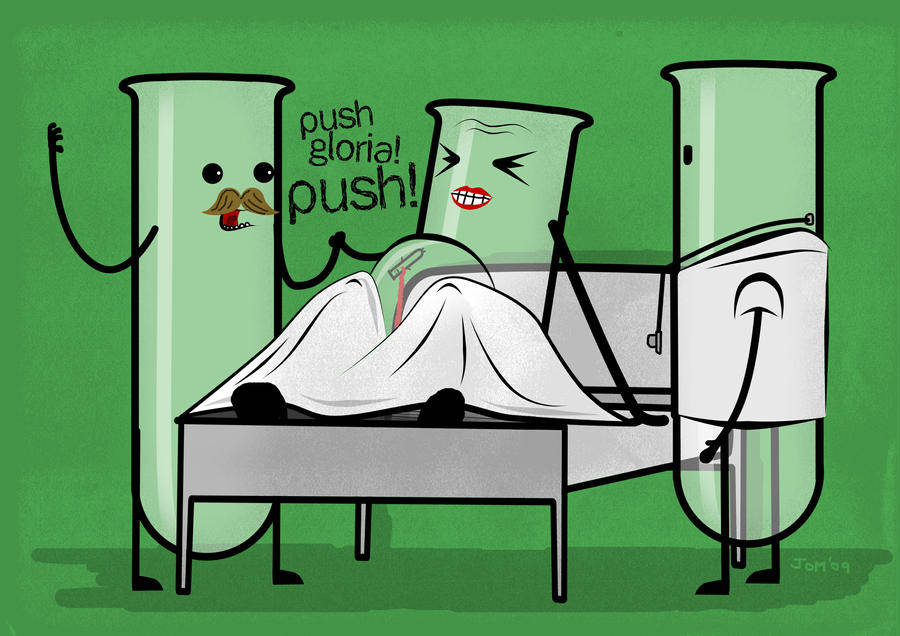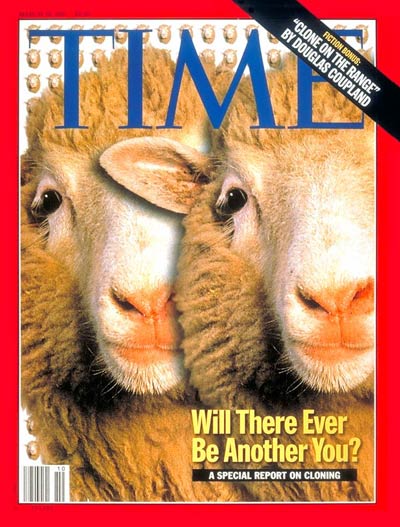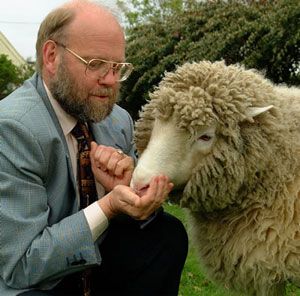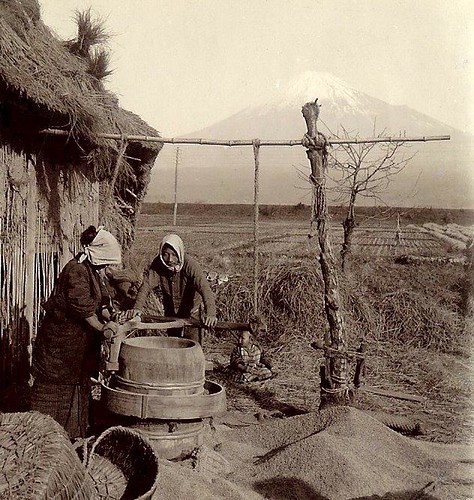by Zad Datu
Preceeding linked article (Read first!):
What Lay People Should Know about Cloning – Animal Reproductive Cloning
What Lay People Should Know about Cloning – Other Types of Cloning
The pen is mightier than the sword.
First there was The Boys from Brazil – a 1976 novel by Ira Levin which imaged an evil uprising made possible through cloning technology. This intriguing scale of evil even made its way into the cinema in 1978.
The story depicts an amateur Nazi hunter, Barry Kohler and a professional Nazi hunter, Ezra Lieberman tracking down a case of assassinations by the Comrades’ Organisation, an international brotherhood of old Nazis. The evil plot includes a series of assassination in progress of 94 men around Europe, Canada and United States over a period of two and a half years. All the victims were 65-year-old civil servants with positions of minor bureaucratic authority, all to be killed on specific dates instructed by Josef Rudolf Mengele (an actual historical figure who was a German SS officer in the Nazi concentration camp Auschwitz-Birkenau, who was infamous for performing gruesome human experiments on camp inmates, including children, earning him the nickname Angel of Death).
Lieberman interviews three of the victims’ wives, one in Germany, another in the United States and the last in London and notices that all wives were much younger than their husbands and have teenage sons who looked identical to each other – black hair, blue eyes, pale skin and lanky body. Upon further investigation Lieberman discovers that all the three boys proved to be the result of illegal adoptions of infants from Brazil by the Comrades’ Organisation to couples all over Europe and North America who fits a description – government civil servants husbands and a wife twenty years younger.
The Angel of Death’s plot was to revive Nazi. But how are the illegal adoptions and assassinations going to do that? If you knew about Hitler’s background – that his father was a politically conservative civil servant, whom he was rebellious against due to the abusiveness and authoritarian parenting, and a mother twenty years younger than the father, and that his father died at the age of 65 when he was turning 14 – you probably would have guessed Mengele’s plot. If you didn’t know about Hitler’s background, then you would have guessed it just after reading the pervious sentence.
As indulging as the story may be, after placing the book down or walking out of the cinema, one would realise that for that moment of indulgence, it was far from reality.
Then there was In His Image: The Cloning of a Man – a 1978 non-fiction book written by a respected and credible science writer and a medical reporter for Time who even contributed articles to The New York Times, David Michael Rorvik, which reports his encounter with a wealthy unmarried man and without children, referred to as “Max”, in 1973 who was in search of a doctor to clone himself for a son with the offer of one million dollars. Rorvik agreed to assist him and found a doctor, referred to as “Darwin”. Darwin used the nuclear transfer technique similar to that used on frogs in the 60s, which proved successful on Max. The cloning was performed in a secret tropical Pacific island controlled by Max. The clone was born on December of 1976 by a surrogate mother referred to as “Sparrow”.
This book did not give the same reaction as The Boys from Brazil did once the book is placed down, as the events of this book were true. Even before its publication, the story made its way to the front page of the March 3rd 1978 publication of the New York Post announcing the first human cloning. Many believed the tale, and even his publisher was unsure. In His Image: The Cloning of a Man became a national best seller as a non-fiction title, which brought up the public’s fear on biotechnology and ethical issues towards cloning and genetic manipulation to the centre of attention.
Of course this claim is now known as a hoax, as if it were true the first human cloning would have preceded the first test tube baby – the first human in vitro fertilisation, a technology which clearly should precede and be inferior to human cloning. Rorvik and his publisher was sued for defamation by a scientist whose research was cited in the book, and was labelled “fraud and a hoax” by the court when Rorvick failed to provide concrete evidence. Rorvik’s motives for the fraud remain unclear. Some speculate that his motives were to raise awareness on the ethics of cloning.
These two books truly started the fire and stirred up the fear to question the ethics of cloning and especially human cloning, as the pen is mightier than the sword.
This fear was preceded by breakthroughs such as the deciphering of the genetic code in 1966, the isolation of DNA ligase (specific type of enzyme that repairs single-stranded discontinuities in double stranded DNA molecule) in 1967, the first isolation of gene in 1969, the isolation if restriction enzyme in 1970, the recombination of DNA molecules in 1972, and the first recombination of DNA organisms in 1973. Further more in 1980, the United States Supreme Court ruled that “live, human made microorganism is patentable material” after court battles between Anada M. Chakrabarty from G.E. and Sidney A. Diamond, the Commissioner of Patents and Trademarks when Chakrabarty developed a strain of oil eating microbes but was rejected a patent by the U.S Patent and Trademark Office in 1978. This ruling led to the birth of the modern biotech industry. Later the Human Genome Project (HGP) , a 13 year long international collaborative scientific research project primarily to identify all the approximately 20,000-25,000 genes in human DNA, and to determine the sequences of the 3 billion chemical base pairs that make up human DNA which began on October 1st 1990 and ended on April of 2003.
Creating Life? Playing God?
The “playing god” argument for cloning is heard of all over. Proponents of the argument view reproductive cloning as creating life, hence playing god and hence immoral and unethical. Firstly, in this context, what does it mean to create life? Isn’t making babies by having sex also creating life? Life is being created through conception, isn’t it?
If what is meant by creating life is to artificially conceive a baby, then artificial insemination (AI), in vitro fertilisation (IVF) and artificial embryonic splitting – in this case, one more extra life than what was naturally under development – too are processes of creating life. So would be the innocuous process of artificial pollination. But artificial pollination isn’t condemned as creating life.
But if what is meant by creating life is to create life out of non-life, then the statement is completely false, although this has actually already been achieved on May of 2010 by John Craig Venter – a work which costs 15 years of research and about 40 million USD to create the chromosomes that control each cell of the bacteria from scratch, eventually creating the first synthetic life form. But don’t worry! Religious groups have already fulfilled their responsibility in taking a stance to correctly condemn this creation of life, as they always do ever since the beginning of scientific advancement to many scientific researches and newly discovered scientific facts which their mythical based beliefs just so happen to contradict. In fact, going further back in time to 1952, the first Miller-Urey experiment was conducted, which involves using natural, non-life related chemical reactions to form amino acids, “the building blocks of life”.
As for AI and IVF, the process still requires the existing building blocks of a newborn – (the DNA from) a sperm, (the DNA from) an ovum and a female to give birth to the baby. Similarly cloning requires the intended DNA for the clone, an enucleated ovum and a female to give birth to the clone. With cloning, scientists have merely found ways into the existing phenomena in the system of life to artificially reproduce asexually.
So allow me to put it straight and clear: Cloning is not creating life anymore than artificial pollination is. If to clone is to create life, so is artificial pollination.
Aside from the laboratory procedures, how cloning differs from IVF and AI is the resulting DNA of the offspring. AI and IVF will produce offspring with the combined DNA of half that of the male sperm donor and half that of the impregnated female – 1: male and female biological parents, where the female biological parent gives birth to the offspring. IVF can also produce offspring with the combined DNA of half that of the male sperm donor and half that of the female ova donor and without the DNA of the female who would give birth to the offspring – 2: male and female biological parents and a surrogate mother. On the other hand, cloning can produce offspring with the DNA of a single donor (male or female) utilising a surrogate mother, or if the donor is a female fit for pregnancy, she can give birth to the offspring herself – 3: one female biological parent giving birth to her own offspring, and 4: one male or female biological parent and a surrogate mother. Looking at these four combinations of “biological-to-birth parents” artificial reproduction, we can see that combinations “3” and “4” are just the asexual version of “1” and “2”. Unless asexual reproduction as itself is unethical, I don’t see how anyone can accept the ethics AI and IVF without accepting the ethics of human cloning – assuming that the technology is safe, that is.
IVF today doesn’t seem to have that invisible hat with the word “immoral” written on it as much as it used to – it is no longer taboo. But before 25th July, 1978, the birth of the first test tube baby, Louise Brown, IVF is seen to be as immoral as cloning is seen now. People fear such medical procedures out of ignorance and that it is just a question of breaking the taboo, the argument is.
But the truth is that there still are religious objection against IVF and AI just as there are against condoms. Their argument for this, which they also use against cloning, is mostly based on the “this is how we are meant to conceive, and not like that” logic. Or in a broader manner “according to god, this is how it should be, and not like that” – the acclaimed divine fascism of a still-to-be-discovered conscious creator of the known world.
Another argument puts forth the idea of destroying our humanity. That clone children will not be treated as humans, but rather as products and objects. Once again, this is a reminiscence of the objection against the birth of Louise Brown 33 years ago. Since then, well over a million human babies have been born healthily from IVF and none of them are treated as products and objects. Some of your friends may very well be products of IVF. You won’t even be able to make out which of your friends are test tube babies and which aren’t unless you were told so.
Actually, there is no need to go so far as AI, IVF and artificial pollination to reveal the inconsistency in the argument – we could still stay within the topic of cloning to do that. Proponents of the “creating life” argument seem to not be too bothered about artificial vegetative propagation, which is a form of reproductive cloning, but for plants. Why isn’t the “creating life, hence playing god” logic used seriously to condemn horticulture? Some less serious proponents of the argument also don’t seem to be too bothered about animal cloning as well.
Now, allow me to put this part straight and clear: Cloning is not creating life anymore than artificial vegetative reproduction is, as this ancient process of artificial vegetative reproduction itself is cloning.
Honestly speaking, the basis of the whole “playing god” argument is pretty much groundless, in my opinion as there are various versions of gods from the various groups of people, all claiming that theirs are correct and the rest are wrong. On top of that, how is the sin of creating life going to practically affect our or anyone’s lives negatively or positively?
What has consistency and practicality on why it may be immoral to clone humans, but is taken less seriously on animals and entirely not seriously on plants is the “doing harm” logic, discussed in the next section to justify how and why cloning may or may not be unethical.
Continue to [Part 2 (of 2)]...
Succeeding linked article – coming soon:
What Lay People Should Know about Cloning – Ethical and Legal Issues (technical) [Part 1] [Part 2] [Part 3]
|
|
|
| Tweet |
|














